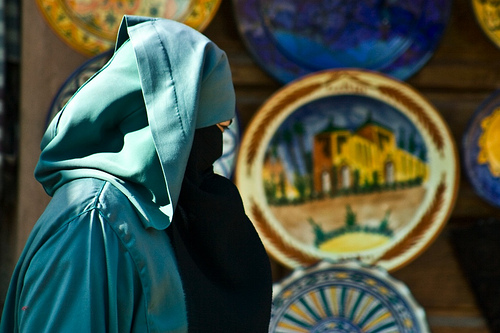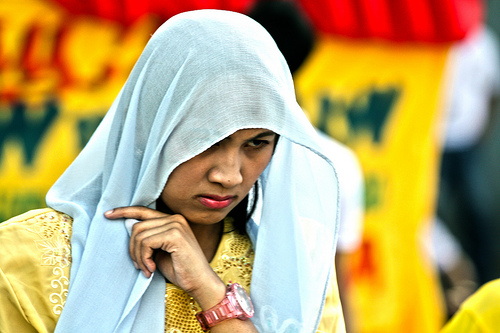I recently came across the following infuriating video which shows UK Islamist Abu Rumaysah talking about how he and his friends go on “Sharia Patrols” to intimidate non-muslims into following Islamic Law. He is so confident that his actions are legitimate that he even orders Clarissa Ward, his CBS interviewer to “Cover Up”:
“Why can’t I tell you to cover up? Am I free to say that?” Rumaysah asked. “So, Cover up. Wear the hijab.
In this article, and it’s sequel: NO to “Wear the Hijab” but YES to “Ban the Burka” I explore the limits of freedom of dress and argue that we are right to be hesitant to limit others’ freedoms, but that there are situations when this freedom must be balanced against freedom of speech, public safety, and protecting vulnerable individuals and communities.
It would be easy for us to critique Rumaysah’s actions by arguing that we don’t believe that one adult has any right to be telling another adult what he or she should or should not wear. While we may want to maintain some shared minimal expectation of ‘public decency’ we are rightly angered when specific cultural mores are imposed on others.
“Ultimately, I want to see every single woman in this country covered from head to toe,” Rumaysah told 60 Minutes correspondent Clarissa Ward. “I want to the see the hand of the thief cut. I want to see adulterers stoned to death. I want to see sharia law in Europe, and I want to see it in America, as well. I believe our patrols are a means to an end.”
However, I have seen several people struggle to put clearly into words how we can consistently and coherently argue that it is wrong for Abu Rumaysah to tell a Ward how to dress, but legitimate for members of the Australian community to tell a Muslim woman how to dress, even going to the length of imposing Legal restrictions on her clothing.
Aren’t the two cases morally equivalent?
No they’re not; and in this two part article, I’m going to tell you why:
First off, let’s get one thing straight – Freedom of dress is a personal freedom which deserves to be protected. Whether it’s women wearing trousers in the 1800’s or a man wearing a dress in 2015, most of us want to err on the side of freedom when it comes to personal tastes in clothing -which is a recognised form of expression. We may as a community to adopt certain standards and norms for dress (e.g. knee-length school uniforms for school girls, or men wearing a suit to a wedding); However, most of us would be loathe to involve the Law in these social negotiations, which rightly fall into the non-legal realm of etiquette.


Then why are many of us ready to Legislate the specific items of dress for Muslim women, especially when several of their clothing options are not too dissimilar from the garb and headdresses of women religious within say, the Christian or Buddhist traditions? (With the notable difference that the niqab and burka cover a woman’s face).
Indeed, women covering their hair is an historic practice around the world, and it is only our culture which has over the last 40 years rejected this practice (many can still remember women in the Church of England wearing hats to church every week).
Now a woman covering her hair for religious reasons shouldn’t really frighten us in of itself. Nor is it legitimate to tell a woman what to dress outside the very basic standards set by and negotiated within the community as a whole (e.g. don’t walk around naked or wear a swimsuit to a funeral). However, there are conditions under which it becomes legitimate for the body politic to discuss, critique and potentially legally intervene upon the clothing choices of adults.
Watch out for my discussion of these conditions, to be published tomorrow in Part two of this series called NO to “Wear the Hijab” but YES to “Ban the Burka”
Photo by Jeff Pioquinto, SJ 










